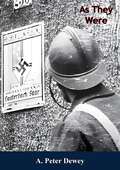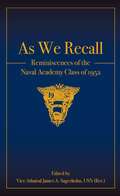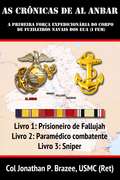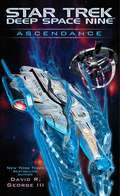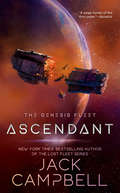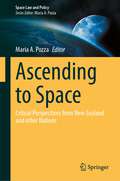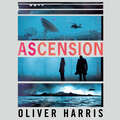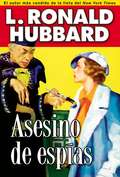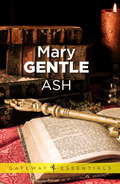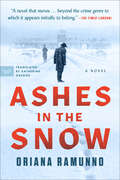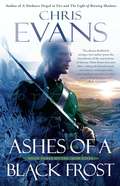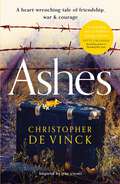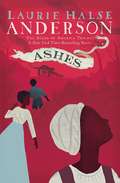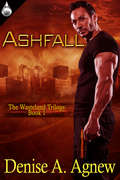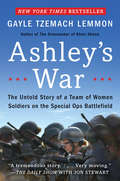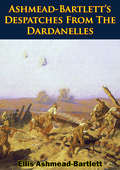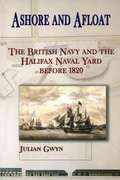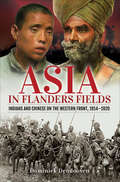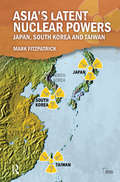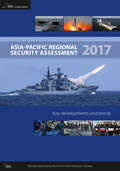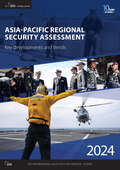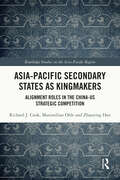- Table View
- List View
As They Were
by A. Peter DeweyAS THEY WERE By LT. COL. A. PETER DEWEYWith the war ended, too many people have already forgotten the dark and uncertain days France knew in 1939-40. But Lieutenant-Colonel Dewey did not forget. He was not the sort of American who could live through such a period and fail to remember. In the simplicity of his book, he has shaped the terror and dissolution of a great people and country. Other writers have told of the corruption in the highest levels of French politics and society; other writers have spoken of the courage that far outweighed the treachery. But none has been able to catch the fevered hopelessness, the panic of those two years. As a Paris correspondent, Dewey was in a position to observe and analyze, and gasp in amazement, at the events which led to the brutal transformation of a great power into a defeated crushed nation. But he has wisely stayed away from the cut-and-dried analyses of political maneuvers and results. He has concentrated upon these hectic days as they affected the individual. His interest was on a human level—the small personal tragedies as well as the great, the death of a child along a refugee-clogged road as well as the decimation of a regiment.AS THEY WERE is not only the story of the early days of this late war as it has never been told before; it is also the story of a sensitive, wise young man who managed to combine an almost delicate culture and a classic intellect with practical ability. Peter Dewey is now dead—killed in action, while serving as a Lieutenant-Colonel in the OSS. He died as courageously as he lived, his physical daring surpassed only by his moral courage. Of his book, Arthur Krock has said: “This is one of the most absorbing accounts of what happened in France in 1939 and 1940 that I have seen—deftly woven into the story of a gallant personal experience are the tragic elements of the debacle.”
As We Recall
by Edited by Vice Admiral James A. SagerholmAs We Recall is the first book of its kind. A collection of reminiscences written by members of the U. S. Naval Academy class of 1952, it is a testament to the value of a Naval Academy education. Some stories are of combat in Korea, exploits in space, aerial combat over Vietnam, or development of major weapons systems. Others are stories of life at sea or of the challenges faced by the families supporting their husbands and fathers. It is safe to say, this book is an edifying, intimate, and inspiring history.
As You Were, Cowboy (Lone Star Leathernecks #2)
by Heather LongMateo Lopez is on medical discharge from the United States Marine Corps after receiving a severe spinal cord injury. He doesn’t believe his life can get back to normal, but a sexy, feisty new horse trainer has other ideas.Mateo Lopez, honorably discharged from the Marine Corps on medical leave, is struggling to rebuild his life. The spinal cord injury that left him feeling like a broken man resulted in his inability to ride the horses he loves and works with on Round Top Ranch. The new horse trainer at the ranch, however, has decided that this isn’t acceptable. Claire Windsor, a spirited, London-born spitfire of a woman, has come to begin a new program to turn the horses into therapy animals. She turns Mateo’s world upside-down, and try as he might to avoid her, she keeps inserting herself into his life. As their plans for the ranch clash, so too do their hearts...making all things fair in love and war.
As crônicas de Al Anbar.: A Primeira Força Expedicionária do Corpo de Fuzileiros Navais dos EUA (I FEM)
by Jonathan P. BrazeeDescrição do livro. Militar; Ficção O Iraque implodiu em 2006 depois do bombardeio da Mesquita Dourada em Samarra. A província de Al Anbar, em particular, se tornou incubadora de ataques às forças da Coalizão e de violência sectária. A Primeira Força Expedicionária do Corpo de Fuzileiros Navais dos EUA (I FEM) estava encarregada de derrotar a al Qaeda estrangeira no Iraque e os combatentes locais. A I FEM não era apenas de Fuzileiros, no entanto. Unidades do Exército, da Marinha, da Força Aérea e da Guarda Costeira e unidades dos parceiros da Coalizão tais como o Reino Unido também fizeram parte da guerra. As crônicas de Al Anbar é uma compilação de três volumes separados que seguem dois fuzileiros e um paramédico da Marinha quando são convocados para Fallujah e Ramadi. Seus caminhos se cruzam, cada história é distinta uma das outras, cada uma um volume em separado. Ficção: As narrativas dos três livros se passam na província de Al Anbar e Bagdá no ano de 2006, e o cenário é preciso assim como a disposição das unidades e os eventos principais. Os personagens nos livros, entretanto, são fictícios. Porém muito do que acontece com eles, principalmente nos dois últimos livros, é baseado em eventos reais observados pelo ou contado ao autor, mas uma boa dose de licença literária foi usada ao escrever as histórias.
As the Crow Flies
by Jeffrey ArcherThe story of a poor barrow boy, born in 1900, who rises to become the founder of Britain's first and most prestigious department store and a member of the peerage.
Ascendance (Star Trek: Deep Space Nine)
by David R. George IIIThe post-television Deep Space Nine saga continues with this original novel from New York Times bestselling author David R. George III!On the original Deep Space Nine, Captain Kira Nerys watches as the nearby wormhole opens and discharges a single, bladelike vessel. Attempts to contact its crew fail, and the ship is soon followed by another vessel of similar design. When an armada subsequently begins to emerge from the wormhole, it seems clear that DS9 is under attack. Kira orders her first officer, Commander Elias Vaughn, to board the U.S.S. Defiant and defend the station, and alerts Starfleet to send additional forces as her crew prepares DS9’s shields and weaponry for the onslaught to come. Meanwhile, on the lead ship, Iliana Ghemor considers launching an attack on DS9 and finally ending the life of Kira, the fountainhead of all the ills in her miserable life. Her vengeance demands more than mere death, though—it requires pain. Ghemor refocuses, choosing to follow her plan to mete out her revenge on the captain by first decimating the population of Bajor… ™, ®, & © 2015 CBS Studios, Inc. STAR TREK and related marks and logos are trademarks of CBS Studios, Inc. All Rights Reserved.
Ascendant (Genesis Fleet, The #2)
by Jack CampbellA young fleet officer and a Marine stand together to defend their colony in the continuation of the powerful and action-packed Genesis Fleet saga from New York Times bestselling author Jack Campbell.In the three years since former fleet officer Rob Geary and former Marine Mele Darcy led improvised forces to repel attacks on the newly settled world of Glenlyon, tensions have only gotten worse.When one of Glenlyon's warships is blown apart trying to break the blockade that has isolated the world from the rest of human-colonized space, only the destroyer Saber remains to defend it from another attack. Geary's decision to take Saber to the nearby star Kosatka to safeguard a diplomatic mission is a risky interpretation of his orders, to say the least.Kosatka has been fighting a growing threat from so-called rebels--who are actually soldiers from aggressive colonies. When a "peacekeeping force" carrying thousands of enemy soldiers arrives in Kosatka's star system, the people of that world, including Lochan Nakamura and former "Red" Carmen Ochoa, face an apparently hopeless battle to retain their freedom. It's said that the best defense is a good offense. But even if a bold and risky move succeeds, Geary and Darcy may not survive it...
Ascending to Space: Critical Perspectives from New Zealand and other Nations (Space Law and Policy)
by Maria A. PozzaThis book explores multidisciplinary perspectives on critical issues in space from the viewpoints of New Zealand and other nations. It brings together the topics examined at the Otago Foreign Policy School 2022 by both domestic and international experts in the area of space, and includes the opening address on space policy delivered by the Minister of Foreign Affairs. This book takes a multidisciplinary approach to New Zealand’s growing space sector in conjunction with other nations’ perspectives on space. It encompasses space science, military and defence matters, space tourism and astronaut rescue, and international legal and policy frameworks, while taking into account future considerations. Readers such as academics, students, policy advisers, diplomats, government officials and others engaged in the field of space will find value in this book. It will appeal to think tanks and international institutions grappling with the complexities that are presented by the outer space domain.
Ascension: an absolutely gripping BBC Two Between the Covers Book Club pick
by Oliver Harris'One of our finest thriller writers' Evening StandardA BBC2 BETWEEN THE COVERS BOOK CLUB PICK 2021'Oliver Harris is always pure quality' Ian Rankin'A fascinating tale of modern espionage in a unique setting' Irish IndependentThree friends from a mission many years ago reconnect when one of them dies in mysterious circumstances on remote Ascension Island. Rory Bannatyne had been tasked with tapping a new transatlantic data cable, but a day before he was due to return home he is found hanged. When Kathryn Taylor, on the South Atlantic MI5 desk, begs ex-spy Elliot Kane to go over and investigate, he can't say no, but it's an uneasy reintroduction to the intelligence game.Entirely isolated from the world, the disappearance of a young girl on the island at the same time as Rory's death means local tensions are high. Elliot needs to discover what happened to her as well as to Rory. But the island contains more secrets than even the government knows, and it's not going to give them up without a fight. WHAT READERS ARE SAYING'Captivating...Gripping, relevant and frenetic. You'll be hard pressed to put this one down for a second' Amazon reader five star review'Stunning spy novel...This is the best of its genre I've read' Amazon reader five star review'A bit like a thinking person's Lee Child' Amazon reader five star review
Asesino de espías
by L. Ronald HubbardEl marinero Americano Kurt Reid es un tipo impetuoso: tan duro y energico como Benicio del Toro. Falsamente acusado de asesinato, Reid cambia de barco en Shangai. . . y desembarca en una telarana de intrigas, traiciones y asesinatos. Atraido a un letal juego de espias, tendra que aprender rapido las reglas, porque con jugadores como la sexy agente rusa Varinka Savischna el juego es tan seductor como siniestro.
Ash: A Secret History (Gateway Essentials #424)
by Mary GentleFor the beautiful young woman Ash, life has always been arquebuses and artillery, swords and armour and the true horrors of hand-to-hand combat. War is her job. She has fought her way to the command of a mercenary company, and on her unlikely shoulders lies the destiny of a Europe threatened by the depredations of an Infidel army more terrible than any nightmare.Winner of the BSFA Award for best novel, 2000
Ashes in the Snow
by Oriana RamunnoHarperVia Paperback OriginalA spellbinding murder mystery with the plotting and characterization of Louise Penny or Agatha Christie set in Auschwitz at Christmas, 1943. Auschwitz, 1943. It’s snowing outside and Block 10 looks even bleaker than usual. Gioele Errera, a young Jewish boy imprisoned in the camp, finds the body of an SS officer.Detective Hugo Fischer is sent to investigate the unexplained death of the renowned Nazi. But Hugo is hiding a secret – he is suffering from a degenerative disease. The only way for him to survive is to give his support to the Reich and hide his condition.In Auschwitz, Hugo comes face to face not only with a complex murder, but with a truth – that of the Final Solution. And he is forced to decide what is most important to him – and who, if anyone, he should try to save…Inspired by the author’s family history, this wonderfully atmospheric page-turner, set during World War II, introduces a memorable hero—the flawed and fascinating Hugo Fischer.
Ashes of a Black Frost: Book Three of The Iron Elves
by Chris EvansBones jutted from the sand at angles--not odd angles, though, for that would suggest that there were ways bones could protrude that made sense--and the eyes of those still living stared and saw nothing. Amidst a scene of carnage on a desert battlefield blanketed in metallic snow, Major Konowa Swift Dragon sees his future, and it is one drenched in shadow and blood. Never mind that he has won a grand victory for the Calahrian Empire. He came here in search of his lost regiment of elves, while the Imperial Prince came looking for the treasures of a mystical library, and both ventures have failed. But Konowa knows, as do the Iron Elves--both living and dead--that another, far more important battle now looms before them. The campaign in the desert was only the latest obstacle on the twisted, darkening path leading inexorably to the Hyntaland, and the final confrontation with the dreaded Shadow Monarch. In this third novel of musket and magic in Chris Evans's Iron Elves saga, Konowa's ultimate journey is fraught with escalating danger. A vast, black forest finds a new source of dark power, spawning creatures even more monstrous than the blood trees from which they evolve. The maniacally unstable former emissary of the Shadow Monarch hungers for revenge, leading an army of ravenous beasts bent on utterly destroying the Iron Elves. A reluctant hero, Private Alwyn Renwar, struggles to maintain his connection to this world and that of the loyalty of the shades of the dead. And in a maze of underground tunnels, Visyna Tekoy, whom Konowa counts among those he has loved and lost, fights for her life against the very elves he so desperately wants to find. And so Konowa sets off from this Canyon of Bones, pursuing his freedom from a curse that has cast his life in darkness. For though his long, violent trek may indeed lead him to his destiny, he is ill prepared for the discovery he will make . . . with the fate of the Iron Elves, and the world, hinging on the courage of one wrathful elf.
Ashes: A WW2 historical fiction inspired by true events. A story of friendship, war and courage
by Christopher de VinckA deeply touching novel about two young women whose differences, which once united them, will tear them apart forever, during Hitler&’s Nazi occupation of Belgium and France. Based on true events.For fans of All The Light We Cannot See and Tattooist of Auschwitz. Belgium, July 1939: Simone Lyon is the daughter of a Belgium national hero, the famous General Joseph Lyon. Her best friend Hava Daniels, is the eldest daughter of a devout Jewish family. Despite growing up in different worlds, they are inseparable.But when, in the spring of 1940, Nazi planes and tanks begin bombing Brussels, their resilience and strength are tested. Hava and Simone find themselves caught in the advancing onslaught and are forced to flee.In an emotionally-charged race for survival, even the most harrowing horrors cannot break their bonds of love and friendship. The two teenage girls, will see their innocence fall, against the ugly backdrop of a war dictating that theirs was a friendship that should never have been.
Ashes: Chains; Forge; Ashes (The Seeds of America Trilogy #Bk. 3)
by Laurie Halse AndersonReturn to the American Revolution in this blistering conclusion to the trilogy that began with the bestselling National Book Award Finalist Chains and continued with Forge, which The New York Times called "a return not only to the colonial era but to historical accuracy."As the Revolutionary War rages on, Isabel and Curzon have narrowly escaped Valley Forge--but their relief is short-lived. Before long they are reported as runaways, and the awful Bellingham is determined to track them down. With purpose and faith, Isabel and Curzon march on, fiercely determined to find Isabel's little sister Ruth, who is enslaved in a Southern state--where bounty hunters are thick as flies. Heroism and heartbreak pave their path, but Isabel and Curzon won't stop until they reach Ruth, and then freedom, in this grand finale to the acclaimed Seeds of America trilogy from Laurie Halse Anderson.
Ashfall
by Denise A. AgnewA strong-willed woman and a former Air Force pararescueman have learned to survive in a new world forged by an apocalypse no one could have stopped. Isolated and alone, Mally Andretti finds hope in the tantalizing voice she hears on her ham radio, a man who says he's her friend. But in a world-gone-crazy, danger looms around every corner and it's hard to know who to trust. Denise A. Agnew presents Ashfall, book one in her exciting new series, The Wasteland Trilogy.After surviving an apocalypse, lonely Mally should feel safe. Until a deep, mysterious voice over the ham radio invites her into soul deep conversation and awakens mental and physical cravings.Her voice calls on every fiercely protective instinctive inside Adam, and when she's in danger he'll do anything to protect her.Content Notes: Spicy, Urban Fantasy, Post-Apocalyptic, Suspense, Uniformed Heroes
Ashley's War: The Untold Story of a Team of Women Soldiers on the Special Ops Battlefield
by Gayle Tzemach LemmonThe New York Times–bestselling account of an elite team of female soldiers is “compelling. . . . In battle as in life, these women refuse to quit” (Christian Science Monitor).In 2010, the Army created Cultural Support Teams, a secret pilot program to insert women alongside Special Operations soldiers battling in Afghanistan. Their presence had a calming effect on enemy households, but more importantly, the CSTs were able to search adult women for weapons and gather crucial intelligence. They could build relationships—woman to woman—in ways that male soldiers in an Islamic country never could.In Ashley’s War, Gayle Tzemach Lemmon uses on-the-ground reporting and a finely tuned understanding of the complexities of war to tell the story of CST-2, a unit of women hand-picked from the Army to serve in this highly specialized role. The pioneers of CST-2 proved for the first time that women might be physically and mentally tough enough to become Special Ops.The price of professional acceptance was personal loss and social isolation: the only people who really understand the women of CST-2 are each other. At the center of this story is a friendship and the shared perils of up-close combat. At the heart of the team is the tale of a beloved and effective soldier, Ashley White. “An unforgettable story of female soldiers breaking the brass ceiling. . . . This book will inspire you.” —Sheryl Sandberg, #1 International bestselling author of Lean In“A tremendous story. . . . Very moving.” —The Daily Show with Jon Stewart“Ashley’s War shares the remarkable stories of one of the first teams of women serving in the U.S. Army Special Operations Command.” —Senator John McCain
Ashmead-Bartlett’s Despatches From The Dardanelles
by Ellis Ashmead-BartlettPublished during the Great War, this book by Ellis Ashmead-Bartlett (1881-1931), a British war correspondent during the First World War, covers the preparations for the assault on Gallipoli, the naval Battle of the Dardanelles, the landings at ANZAC and Cape Helles and the battles for Krithia, Achi Baba and the heights of ANZAC from March to July 1915.Through his reporting of the Battle of Gallipoli, Ashmead-Bartlett was instrumental in the birth of the Anzac legend, which still dominates military history in Australia and New Zealand. Outspoken in his criticism of the conduct of the campaign, he was instrumental in bringing about the dismissal of the British commander-in-chief, Sir Ian Hamilton--an event that led to the evacuation of British forces from the Gallipoli peninsula.
Ashore and Afloat: The British Navy and the Halifax Naval Yard Before 1820
by Julian GwynThis book tells the early history of the Halifax Naval Yard. From the building of the yard and its expansion, to the people involved in the enterprise, to the nuts and bolts of buying the masts and paying the bills.
Ashton-Under-Lyne in the Great War (Your Towns & Cities in the Great War)
by Glynis CooperA new book on Ashton-under-Lyne during World War I is being published as part of a series on Towns and Cities in the Great War to commemorate the centenary of the beginning of the War. It focuses on the economic and social conditions, problems and hardships of those left at home in England played out against a background of military action on the Western Front, in Turkey, Egypt and Palestine. Ashton was both a garrison town and a mill town. There were three Battalions based locally and over 1500 local men lost their lives. Sir Max Aitken, later Lord Beaverbrook, was Liberal Unionist MP for Ashton. In the summer of 1917 five tons of TNT exploded at an Ashton munitions factory destroying mills and houses, setting gasometers on fire and hurling acid drums into the river. Fifty people died and five hundred were injured. The book chronicles the difficulties, hardships, restrictions and morale of the town year by year as the War dragged on; the constant fear of Zeppelin raids; and the determined spirit of the folk of Ashton that the Kaiser would not beat them.
Asia in Flanders Fields: Indians and Chinese on the Western Front, 1914–1920
by Dominiek DendoovenThe First World War brought peoples from five continents to support the British and French Allies on the Western Front. Many were from colonial territories in the British and French empires, and the largest contingents were Indians and Chinese - some 140,000. It is a story of the encounter with the European 'other', including the civilian European local populations, often marred by racism, discrimination and zenophobia both inside and outside the military command, but also lightened by moving and enduring 'human' social relationships. The vital contribution to the Alles and the huge sacrifices involved were scarcely recognised at the Paris Peace Conference in 1918 or the post-war victory celebrations and this led to resentment - see huge media coverage in 2021. The effect of the European 'other' experience enhanced Asian political awareness and self-confidence, and stimulated anti-imperialism and proto-nationalism. This is a vivid and original contribution to imperial decline from the First World War. and the originality of the work is enhanced by rare sources culled from original documents and 'local' European fieldwork - in French, German and Flemish.
Asia's Latent Nuclear Powers: Japan, South Korea and Taiwan (Adelphi series)
by Mark FitzpatrickIf the nuclear weapons club were to further expand, would America�s democratic allies in Northeast Asia be among the next entrants? Japan, South Korea and Taiwan all have robust civilian nuclear energy programmes that make them �virtual nuclear powers� according to many analysts. All three once pursued nuclear weapons and all face growing security threats from nuclear-armed adversaries. But will they � or rather, under what circumstances might they? This book analyses these past nuclear pursuits and current proliferation drivers. In explaining the nuclear technology that the three now possess, it considers how long it would take each to build a nuclear weapon if such a fateful decision were made. Although nuclear dominoes Northeast Asia cannot be ruled out, the author does not predict such a scenario. Unlike when each previously went down a nuclear path, democracy and a free press now prevail as barriers to building nukes in the basement. Reliance on US defence commitments is a better security alternative -- as long as such guarantees remain credible, an issue that is also assessed. But extended deterrence is not a tight barrier to proliferation of sensitive nuclear technologies. Nuclear hedging by its Northeast Asian partners will challenge Washington�s nuclear diplomacy.
Asia-Pacific Regional Security Assessment 2017
by International Institute for Strategic StudiesThis book offers an analysis of the four central regional security themes relevant to the policy-focussed discussions at the annual IISS Shangri-La Dialogue. Namely: The evolving roles of the United States and China in Asia-Pacific security;Responses by the US and regional states to regional security tensions, particularly in the South China Sea;Emerging security questions relating to nuclear weapons, missiles and military cyber capabilities;The prospects for regional security cooperation, including the challenges for the ASEAN-centred architecture.
Asia-Pacific Regional Security Assessment 2024: Key developments and trends
The Asia-Pacific Regional Security Assessment (APRSA) examines key regional security policies and challenges relevant to the proceedings of the IISS Shangri-La Dialogue, Asia’s premier defence summit convened by the International Institute for Strategic Studies (IISS). It is published and launched at the Dialogue and the issues analysed within its covers are central to discussions at the event and beyond. This eleventh edition comes as the APRSA celebrates its first decade. A dozen IISS experts reflect on a decade of change and continuity across major security policies and challenges facing the Asia-Pacific region. Three themes materialise across six chapters: the pressure and constraints surrounding great-power competition, the enduring value of alliances and partnerships and the impact of advanced and emerging technology for regional security dynamics.In addition to the introduction, the APRSA will now feature a special-topic chapter providing a deeper analysis of an enduring security policy and challenge. The other five chapters investigate further key dimensions of the regional security environment, supported by maps, graphs, charts and tables. The six chapters of this year’s APRSA cover the following topics: Combined military exercises in the Asia-Pacific Crisis management between the United States and China India’s defence partnership in the Asia-Pacific Diplomatic approaches to managing the Myanmar conflict Disinformation campaigns in the Asia-Pacific The Asia-Pacific air-to-air challenge
Asia-Pacific Secondary States as Kingmakers: Alignment Roles in the China-US Strategic Competition (Routledge Studies on the Asia-Pacific Region)
by Richard J. Cook Zhaoying Han Maximilian OhleFocusing on the Asia-Pacific region, Cook, Ohle and Han investigate the escalating strategic competition between China and the US. They explore the dynamics of key regional secondary states caught in the middle, namely Japan, South Korea, the Philippines and Vietnam, emphasising their crucial role as potential kingmakers in the shifting balance of power.China and the US are competing to win influence over these regional linchpins to advance their geopolitical ambitions and ultimately win the strategic competition. Elucidating a “power of the weak paradox”, this contribution examines the challenging choices faced by these secondary states as they navigate alignment pressures, which influence the trajectory of the great power strategic competition. Drawing upon a range of first-hand government sources and regional perspectives, the authors take the temperature of the China-US strategic competition, revealing the intricate influencing dynamics and perilous choices linchpins are being pushed to make that will determine the fate of the Asia-Pacific.This is a timely resource for researchers, students, scholars and politicians navigating the complex realm of international relations by providing a profound exploration of power struggles, strategic choices and the often-overlooked role of secondary states.
